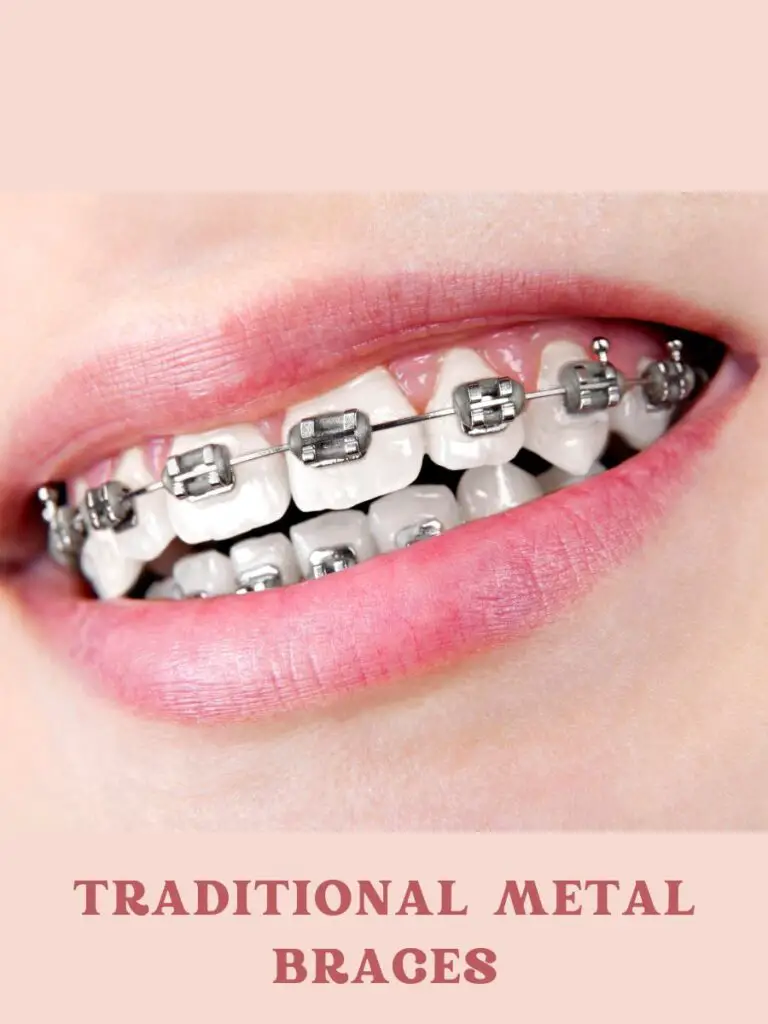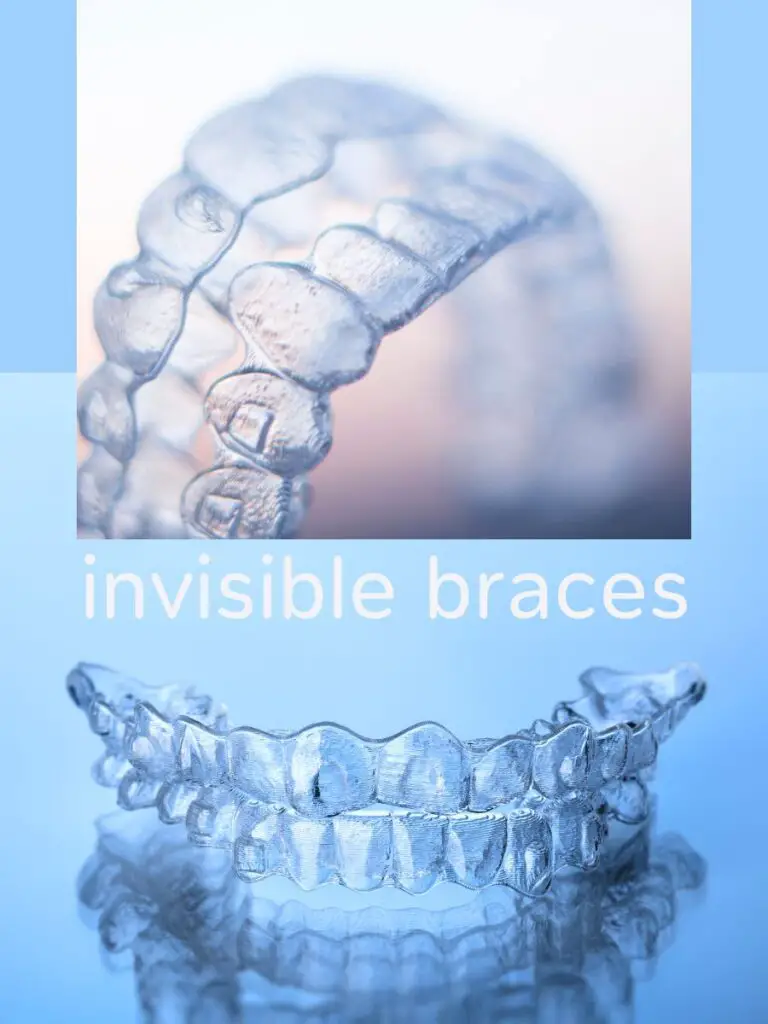As an Amazon affiliate, I may earn from qualifying purchases. Please read our Disclaimer and Privacy Policy.
If you’re considering getting braces over 50 but have some concerns, you’re in good company. A number of adults over the age of 50 are eager for that perfect smile but naturally have some reservations.
The reality is that some people can only afford braces over 50. Other reasons for wanting braces over 50 include:
- cosmetic concerns
- orthodontic issues
- health concerns
- the availability of newer orthodontic technology
- financial stability
Having orthodontic work is practically a right of passage for many teenagers and young adults.
Older patients may not have the same social or aesthetic concerns as a younger person. They may, however, have underlying conditions or bone loss they’re not even aware of.
Keep reading to learn more about the things that may prevent you from getting traditional braces.
Discover the different types of braces, including the pros and cons of each, price considerations, and health considerations to take into account.

Most Common Types of Braces For Adults Over 50
People of all ages seek out the orthodontist’s chair to fix a crooked smile. Luckily, there are a variety of treatment options to choose from.
Whether you choose metal brackets or Invisalign aligners will depend on your individual needs. Of course, your orthodontic specialist will be your best source of advice and guidance.
Traditional Metal Braces
Traditional metal braces have stainless steel brackets and wires. They’re a familiar sight to young and adult patients alike.
While they may not be the most aesthetically pleasing option, they are highly effective in correcting various dental issues, including crooked teeth, misaligned bites, and poor oral health.
Traditional braces are effective at correcting a wide range of orthodontic issues, including severe misalignments, bit problems, and overcrowding.
They’re durable and generally less expensive than other orthodontic options.
Unfortunately, they are the most noticeable type of braces. They’re also not the most comfortable.
The brackets and wires can cause discomfort, irritation, and sores on the inside of the cheeks and lips. They can be difficult to clean and may require food restrictions.
One way to help alleviate this discomfort is to use products specifically designed for cleaning and caring for braces:
- OrthoDots CLEAR Moisture Activated Wax
- Water Dental Flosser For Teeth Cleaning (Braces Care)
- Brace Bright Foaming Cleanser for Braces
- Portable Orthodontic Oral Care Kit for Braces
- H2ofloss Water Dental Flosser Cordless Rechargeable
In fact, some patients experience temporary speech difficulties when first getting used to braces.
Cost of Traditional Metal Braces
$3000 to $7500
While the average cost of traditional metal braces in the U.S. ranges from $3,000 to $7,500, the final price will depend on various individual factors.
Consulting with an orthodontist can provide a more accurate estimate based on your specific needs and circumstances.
It’s also advisable to explore all available payment options and insurance coverage to make the treatment more affordable.

Clear Aligners
Clear aligners, like Invisalign, are a popular choice among adults who want straighter teeth.
The first thing you’ll need to do is arrange a consultation with your orthodontist, who will assess your dental needs. If you’re eligible, digital scans or impressions are used to create a 3D image of your teeth.
This creates a precise digital model of your teeth that allows the orthodontist to map out the exact movement of the teeth.
Based on your treatment plan, a series of custom-made aligners will be created. You’ll wear each aligner for approximately one to two weeks before moving on to the next one.
Your clear plastic aligners will be custom-made for you using specialized software.
This software is able to assist the dentist in coming up with a plan that outlines the precise movement of your teeth through the course of treatment.
From there, a series of removal trays are created.
You will wear each tray for 1 or 2 weeks (depending on your treatment plan) before moving on to the next tray. Of course, each new tray gradually straightens your teeth over time.
Clear braces can be your ticket to straight teeth and a beautiful smile.
The catch is that you have to be committed to wearing the aligners all day and night, removing them only for eating, drinking anything other than water, brushing, and flossing.
Invisalign Pros
Invisible braces are a good option if you’re looking for discreet orthodontic treatments. They’re less likely to cause irritation compared to traditional braces, and they allow for good oral hygiene.
In addition, there are no dietary restrictions needed with these.
Cons of Invisalign Treatment
Invisible braces, like Invisalign, tend to be more expensive than traditional options. They require discipline and compliance in order to get the results you want, and they may not be suitable for more complex dental cases.
Cost of Invisible Braces
$3000 to $8000

Ceramic Braces
Ceramic braces use brackets made of ceramic or porcelain material. They work by applying constant pressure to gradually shift teeth into the desired position.
Pros of Ceramic Braces
Ceramic braces are less noticeable than traditional metal braces. They can also correct a wide range of orthodontic issues while offering precise control over tooth movement.
In addition, the smooth brackets are less likely to cause irritation to the gums and cheeks.
Cons of Ceramic Braces
Unfortunately, ceramic braces tend to be more expensive than the traditional route. In some cases, dental insurance may not fully cover the additional cost of ceramic braces.
Unlike traditional metal braces, ceramic brackets are more prone to chipping or cracking. Like most braces, there is an adjustment period with some discomfort or soreness.
Finally, it’s harder to keep your teeth clean with ceramic braces.
Cost of Ceramic Braces
$4000 to $8000
Lingual Braces
Lingual braces are placed behind the teeth, hiding them from view. While they may require a longer adjustment period, they offer a discreet solution for adults over 50 seeking orthodontic treatment.
They work similarly to traditional braces by applying constant pressure to gradually move teeth into the desired position.
Pros of Lingual Braces
It’s hard to deny the aesthetic appeal to lingual braces because nobody will know you’re wearing them. They’re custom-made and may be less irritating to the teeth and gums.
You won’t have to worry about oral hygiene with these braces because they are placed on the back of your teeth. This makes it much easier to brush your teeth as normal.
Cons of Lingual Braces
Lingual braces tend to be expensive and may require longer treatment times to be effective. In some cases, people develop a temporary speech impediment while adjusting to them.
Cost of Lingual Braces
$8000 to $13,000
Can I Get Braces Over 50?
7 Potential Problems That Might Stop You
There are some health conditions that may need to be treated before you become a good candidate for braces over 50.
Contrary to common misconceptions, older adults can benefit greatly from orthodontic treatment.
While the natural wear and tear of the teeth may present challenges, braces can address issues such as tooth loss, misaligned bites, and dental imperfections.
In some cases, straightening teeth can alleviate jaw pain, improve oral function, and enhance overall dental health.
The following are some reasons why adults over 50 may not be good candidates for braces:
1. Severe Gum Disease (Periodontal Disease)
Advanced gum disease can compromise the stability of teeth and the surrounding bone structure.
This can make it difficult to support braces. In fact, it’s possible that orthodontic treatment could worsen gum inflammation. This could lead to further complications if gum disease isn’t probably managed beforehand.
2. Untreated Tooth Decay
If a person has tooth decay that hasn’t been addressed, the movement of teeth during orthodontic treatment could worsen the decay or lead to dental infections.
It’s crucial to address the condition of your teeth before jumping into adult orthodontics.
3. Untreated Oral Health Issues
Untreated oral health issues such as infections, abscesses, or untreated dental work (root canals, etc.) could pose risks during orthodontic treatment.
4. Heart Disease
Individuals with heart conditions may need to avoid certain types of orthodontic treatment, especially those that require invasive procedures.
If you’re considering braces over 50, it’s important to consult with your physician and your orthodontist to ensure you’re in top condition.
5. Temporomandibular Joint (TMJ) Disorders
Temporomandibular joints (TMJ) play a crucial role in jaw movement and function.
TMJ disorders, characterized by pain, clicking or popping sounds, and difficulty with jaw movement, can significantly impact orthodontic treatment.
For someone over 50 with pre-existing TMJ issues, getting braces may not be advised. Braces could worsen TMJ symptoms by altering the teeth and affecting the bite.
6. Severe Bone Loss
Bone loss in the jaw can affect the stability of teeth and their ability to withstand orthodontic forces. In cases like this, alternative treatments may be required to ensure the success of the orthodontic treatment.
7. Uncontrolled Health Conditions
Conditions such as diabetes, hypertension, or autoimmune disorders could increase the risk of complications during treatment.
Ultimately, the decision to pursue braces over 50 should be made in consultation with your orthodontist and other relevant health care providers.
What to read next:
7 Stages of Dementia Chart: Early Signs of Progression
Are Dental Implants Worth It? 5 Pros and Cons
Conclusion
In conclusion, age should not be a deterrent to seeking orthodontic care. Braces have become more accessible and effective than ever before.
Whether it’s achieving a straighter smile, improving oral function, or addressing underlying dental issues, adult braces offer a solution for individuals of all ages.
By consulting with a specialist orthodontist and exploring the available options, older adults can embark on a journey towards a healthier, more confident smile.

